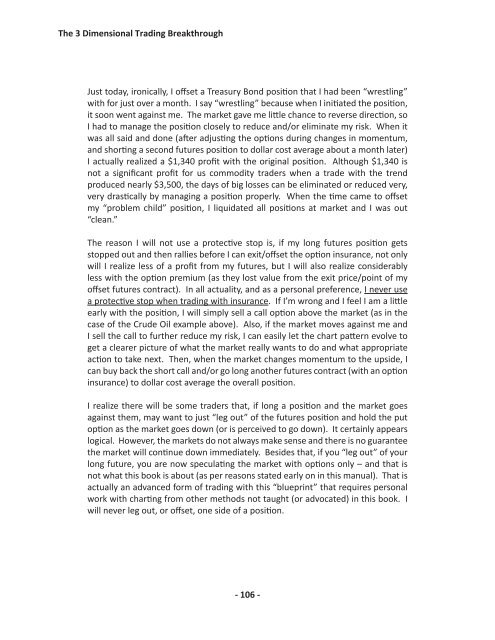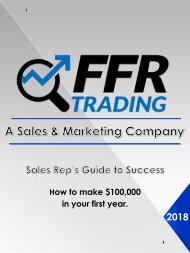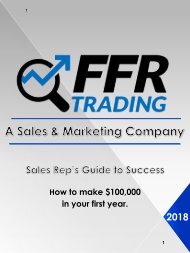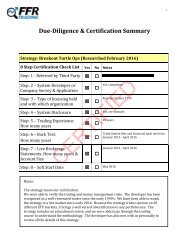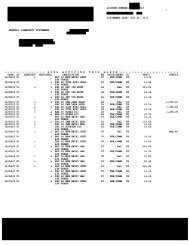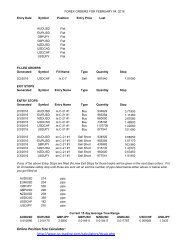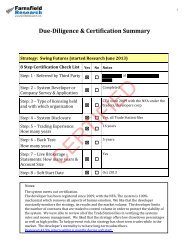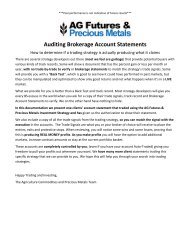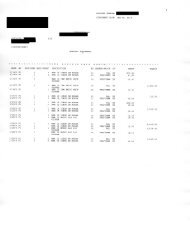The 3Dimensional Trading Breakthrough
Create successful ePaper yourself
Turn your PDF publications into a flip-book with our unique Google optimized e-Paper software.
<strong>The</strong> 3 Dimensional <strong>Trading</strong> <strong>Breakthrough</strong><br />
Just today, ironically, I offset a Treasury Bond position that I had been “wrestling”<br />
with for just over a month. I say “wrestling” because when I initiated the position,<br />
it soon went against me. <strong>The</strong> market gave me little chance to reverse direction, so<br />
I had to manage the position closely to reduce and/or eliminate my risk. When it<br />
was all said and done (after adjusting the options during changes in momentum,<br />
and shorting a second futures position to dollar cost average about a month later)<br />
I actually realized a $1,340 profit with the original position. Although $1,340 is<br />
not a significant profit for us commodity traders when a trade with the trend<br />
produced nearly $3,500, the days of big losses can be eliminated or reduced very,<br />
very drastically by managing a position properly. When the time came to offset<br />
my “problem child” position, I liquidated all positions at market and I was out<br />
“clean.”<br />
<strong>The</strong> reason I will not use a protective stop is, if my long futures position gets<br />
stopped out and then rallies before I can exit/offset the option insurance, not only<br />
will I realize less of a profit from my futures, but I will also realize considerably<br />
less with the option premium (as they lost value from the exit price/point of my<br />
offset futures contract). In all actuality, and as a personal preference, I never use<br />
a protective stop when trading with insurance. If I’m wrong and I feel I am a little<br />
early with the position, I will simply sell a call option above the market (as in the<br />
case of the Crude Oil example above). Also, if the market moves against me and<br />
I sell the call to further reduce my risk, I can easily let the chart pattern evolve to<br />
get a clearer picture of what the market really wants to do and what appropriate<br />
action to take next. <strong>The</strong>n, when the market changes momentum to the upside, I<br />
can buy back the short call and/or go long another futures contract (with an option<br />
insurance) to dollar cost average the overall position.<br />
I realize there will be some traders that, if long a position and the market goes<br />
against them, may want to just “leg out” of the futures position and hold the put<br />
option as the market goes down (or is perceived to go down). It certainly appears<br />
logical. However, the markets do not always make sense and there is no guarantee<br />
the market will continue down immediately. Besides that, if you “leg out” of your<br />
long future, you are now speculating the market with options only – and that is<br />
not what this book is about (as per reasons stated early on in this manual). That is<br />
actually an advanced form of trading with this “blueprint” that requires personal<br />
work with charting from other methods not taught (or advocated) in this book. I<br />
will never leg out, or offset, one side of a position.<br />
- 106 -


